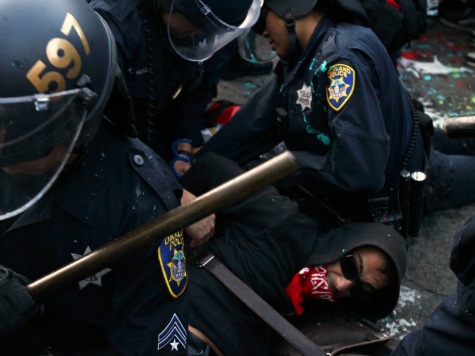
The NAACP will be voting on a resolution advocating for requirements that doctors nationwide “report suspected police brutality or the use of excessive force by law enforcement.”
The vote will come at the organization’s annual convention in Orlando this week. The resolution argues, “physicians already have a duty to report suspected child abuse, sexual abuse and domestic violence to law enforcement when patients are seen at the hospital, clinics and emergency rooms.”
Proponents of the resolution believe that requiring healthcare professionals to report the use of police brutality or excessive force would not be a further “burden” to other mandatory requirements for physicians.
The resolution cites two studies in support of its claim. Policeone.com broke these studies down in 2011:
In 2009 five emergency care experts reported results of a survey of more than 300 ER physicians, in which virtually all said they “believed excessive use of force [by police] actually occurs” and roughly 98 percent said they had “managed patients with suspected excessive use of force.”
In October 2010, two physicians from this research team (Dr. H. Range Hutson of Harvard and Dr. Jared Strote of the University of Washington) joined 2 PhDs from the criminology department of the University of South Carolina (Hayden Smith and Geoffrey Alpert) in publishing an editorial in the Annals of Emergency Medicine. This piece reprised the findings of the original study and urged that ER physicians report their “concerns” about “police abuse” to police department Internal Affairs offices and make note of them in separate reports “not included in the case notes.”
Dr. Christine Hall, a Canadian researcher, criticized the original study as what she called “poor research.”
“Injury alone does not signify excess. What does a fractured arm tell you, in and of itself? Outcome cannot determine the appropriateness of the force used,” Hall told Force Science News.
In other words, subjects surveyed in the original study — academic physicians randomly drawn from faculties of emergency medicine residency programs in teaching hospitals — were a questionable pool in terms of producing meaningful results. “They have relatively little contact with or understanding of use of force but still felt comfortable commenting on it,” she says.
Furthermore, Hall claims, they were asked to specifically recall situations such as handcuffs that were too tight, with the implication that these could be indicators of unwarranted force. “They were prompted to remember something as being excessive which they might not otherwise have considered excessive,” she says. She characterizes this as “measurement bias” on the part of the researchers.
Particularly disturbing, she says, was this obvious flaw: An unknown portion of the many doctors who said they had encountered “suspicious” cases based their conclusions on the fact that suspects themselves said they had been subjected to excessive force by the police! One study cited in the Annals editorial found (not surprisingly) that about three-fourths of the subjects against whom force was used claimed it was excessive. “How can this be a credible means of identifying excessive force?” Hall wonders.
The NAACP’s resolution states it will collaborate with the National Medical Association and American Medical Association on the issue.

COMMENTS
Please let us know if you're having issues with commenting.